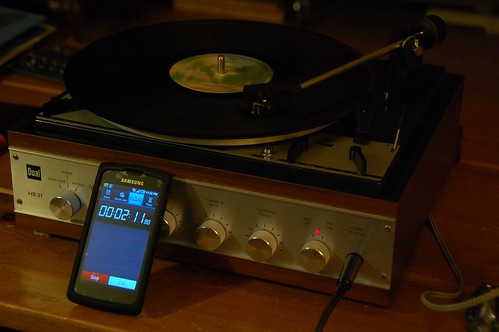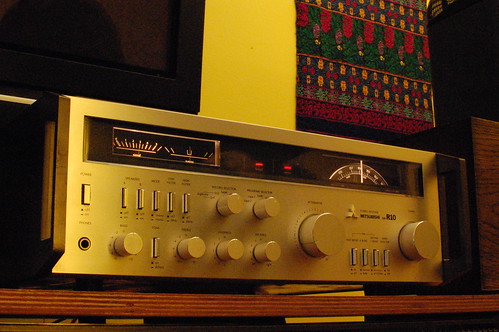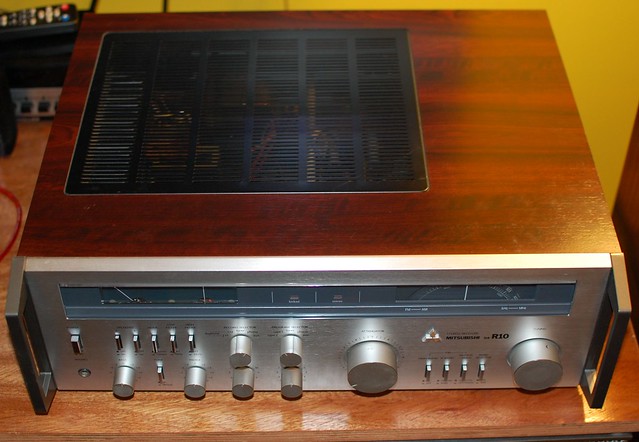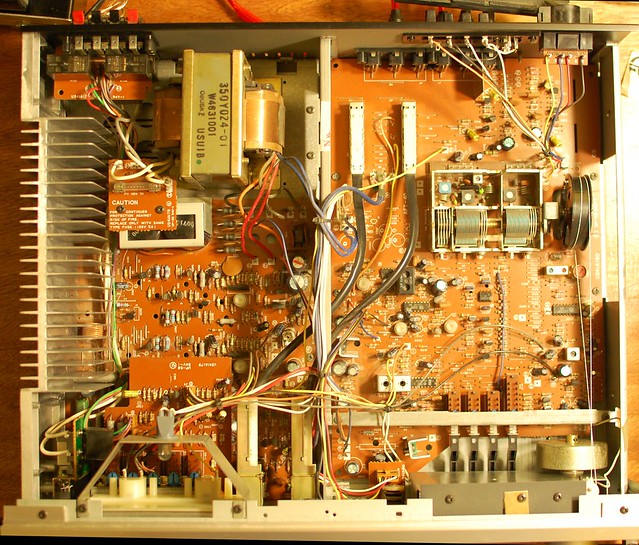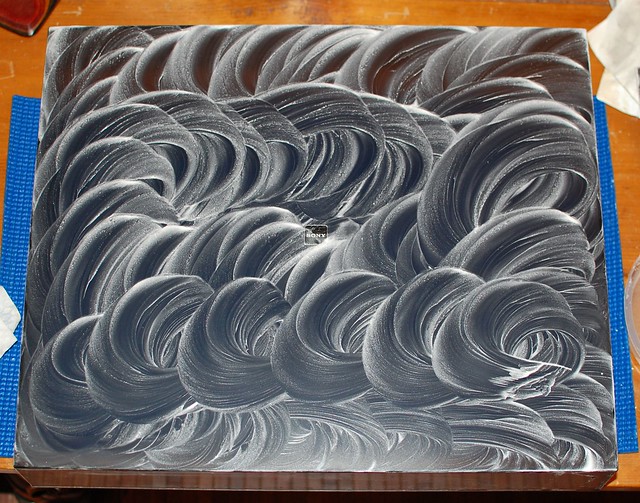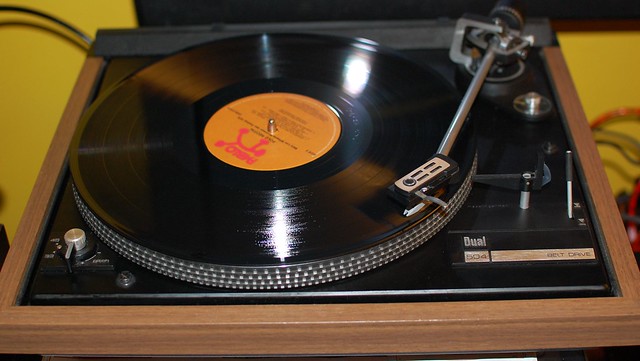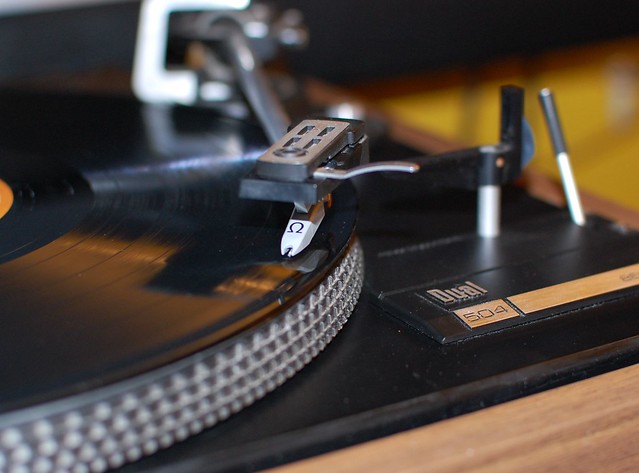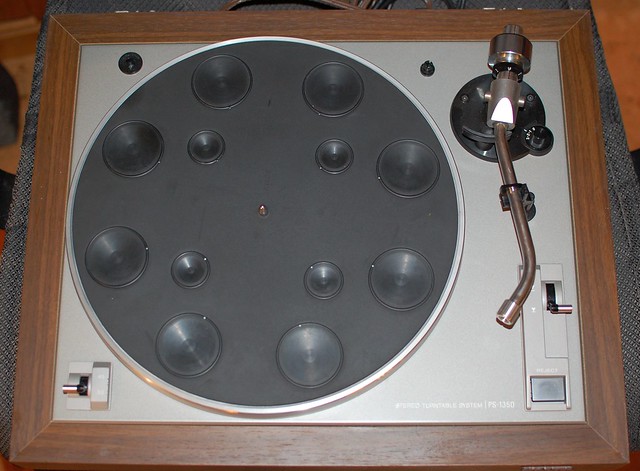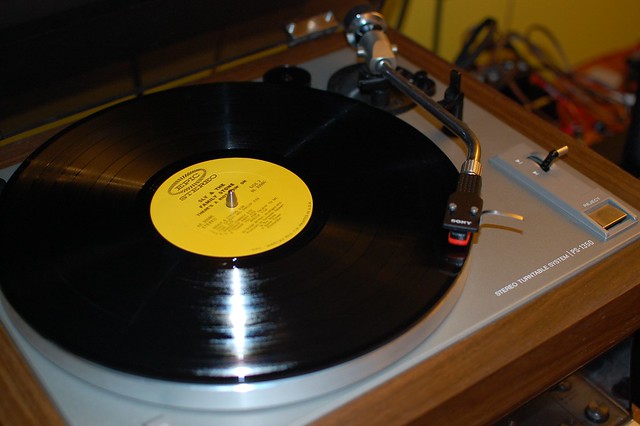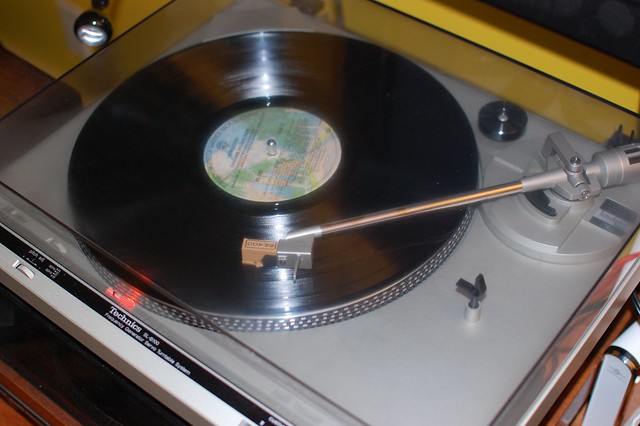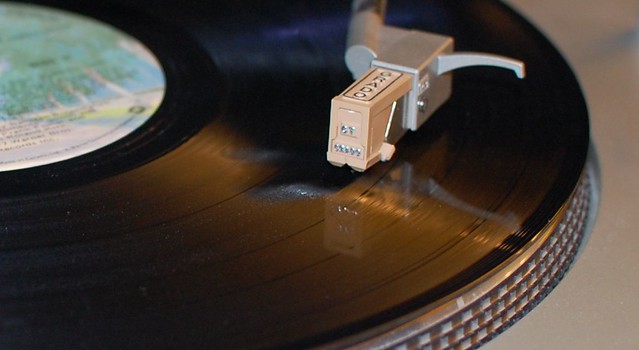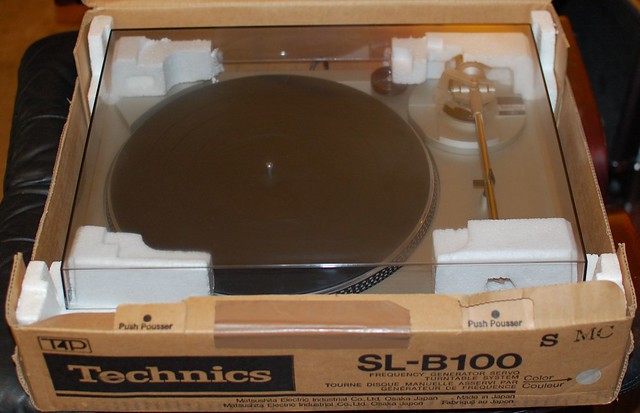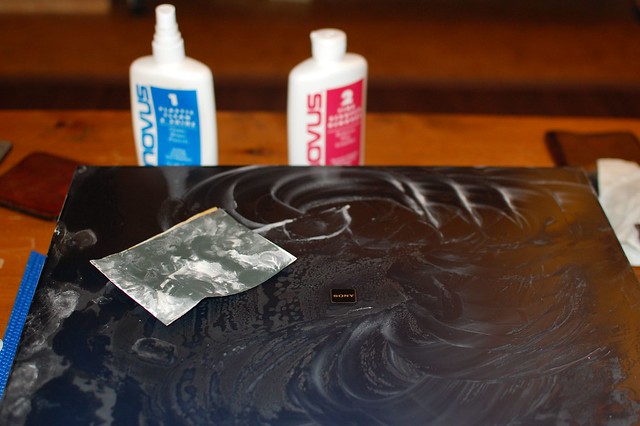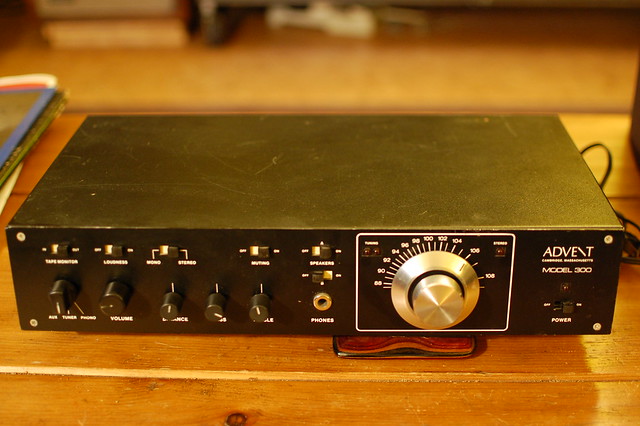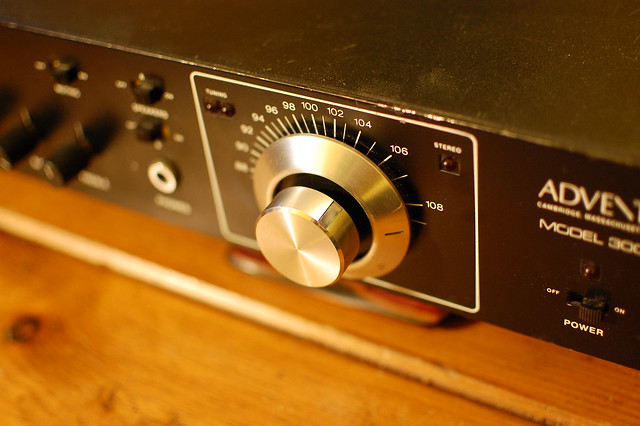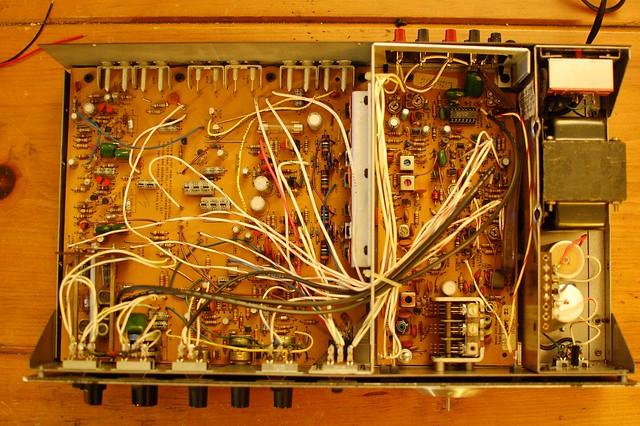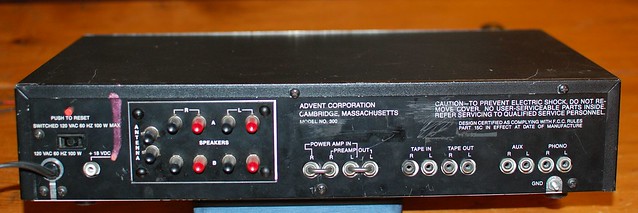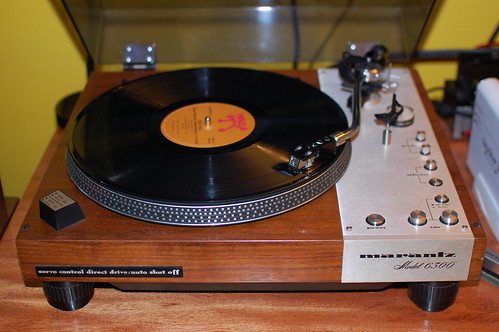This old Dual all-in-one I picked up several months ago for $25, delivered.
I guess it's in not really an all-in-one as those usually have a tuner and maybe some kind of tape deck built in. This is only a turntable and amplifier but it does have inputs for tuner and tape. I've always thought my Sony ST-80F tuner goes with it pretty well. They differ in quite a few ways but have something in common as well, in the small footprint and era, plus the nice wooden cases.
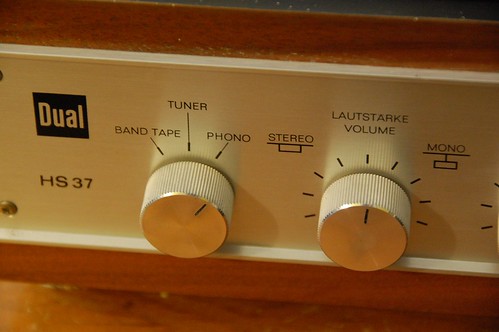
The Dual is based on a 1214 automatic turntable. At the moment it is the only table I have that will play 78 RPM records. Now I don't have any 78s but if I did this would get some use. As such I have just kept it for the coolness factor. Some 78s will fall into my lap some day, giving me some incentive to keep it hooked up.
Playing 78s is also not just a matter of turning the record at the speed. The grooves in 78 RPM records are cut much wider than those for 33 and 45 RPM so the stylus or "needle" for one is NOT compatible for the other. The cartridge this Dual came with is what I call a flipper design. It has both size styli on it and you simply flip a small lever (you can just see the red thing in this pic) from one side to the other to play the different discs. I had a look at the styli under my little scope and I can certainly see the difference in size and it seemed pretty obvious to me that the 78 side had never been used.
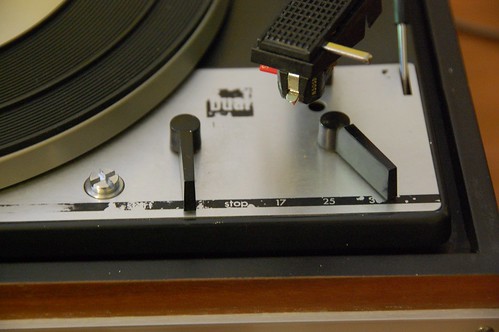
Most of the Duals of this era used an idler drive mechanism to drive the platter. Idler drive refers to a rubber roller that is pressed against the wall of the platter (usually underneath and inside), and a precisely machined shaft attached to the motor armature. The friction turns the platter and disc with it.
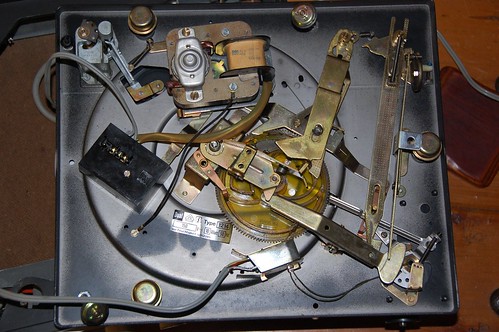
Of the 3 styles of turntable drive systems, the others being belt drive and direct drive, the idler is the least common these days. It was quite common 30, 40, 50 or more years ago and as far as I know predates the other systems (certainly it does direct drive). It still has ardent fans among the classic audio crowd and when it is well done and properly adjusted is arguablly as good or better than the other systems.
I'm not sure the Dual 1214 quite fits the audiophile profile, but it also has fans. There were many models around this time and they shared a lot of characteristics.
The amplifier base this sits in bears resemblance to some sold under the Noresco name and they may be the same for different markets. Mine was almost certainly sourced in Europe which is of course where Dual comes from. Indicators are of course the labels in German and English and the use of DIN connectors on the back panel.

I've done some work on this device but still have some more to do. The old oil or grease used to lubricate the many parts of the mechanism gets gummy and things often don't want to move. 40 years on it is not surprising it has a few aches and pains. The record size change mechanism which has a lot of parts inclduing springs and bearings was especially stuck. I had to take a part a bunch of it to figure out how it worked and luckily I was able to get it back together.
The motor and drive speed has also been a bit tricky. The idler roller just did not want to apply enough pressure on the motor shaft to turn reliably or even start without help from me spinning the platter. The pulley on the motor has 3 sections in different diameters for 33, 45 and 78 rpm. Each of those are also tapered so vary in size. The speed adjustment knob or pitch control on top of the turntable moves the roller up and down on the taper to allow for abou a 3% change in speed of the platter. That pulley can also be moved on the motor shaft by loosening a set screw and adjusting the height & than re-tightening the screw. That's the theory...
I've yet to hook up speakers to this, at least partly because of the DIN connections which it uses rather than bare wire or pin connectors as in more modern & North American gear. These are not that hard to find or work around and I have some here somewhere as I do have some other things that use them. I'm just lazy, so plugging in some headphones works for now.
Below is me testing the speed by simply running a stop watch app on my phone while playing a record that had the track times listed. In this case it was not my sacrificial Frankie Laine album, but the Doobie Brothers took the hit instead.
